|
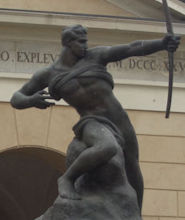 Dwight Peck's personal website Dwight Peck's personal website
Ten days based in Lodi, Lombardy
A very cold 19 to 28 February 2018
You may not find this terribly rewarding unless you're included here, so this is a good time for casual and random browsers to turn back before they get too caught up in the sweep and majesty of the proceedings and can't let go.
An afternoon in downtown Crema
with some skeletons in fancy dress
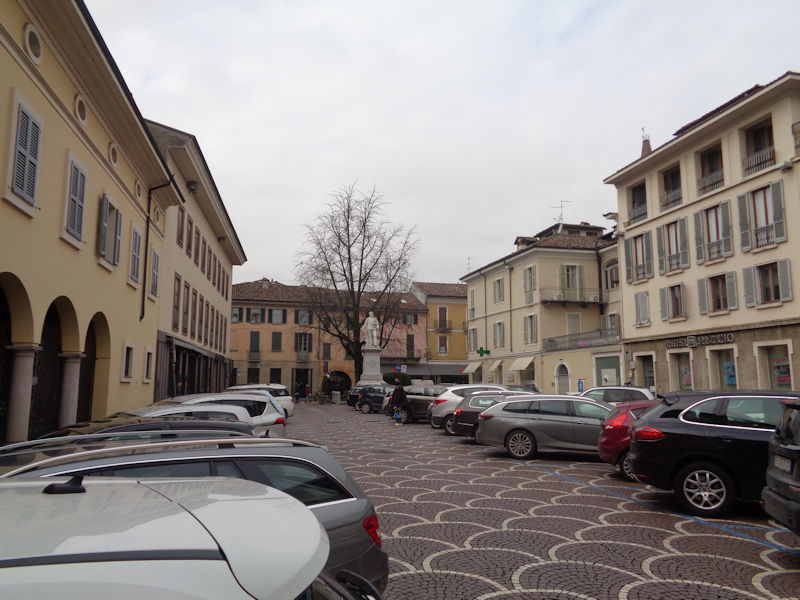
Convenient downtown parking in the Piazza Aldo Moro. Crema is a small city of about 34,000 in Lombardy on the river Serio, about 40km southeast of Milan and 35km northwest of Cremona, and about 15km east of Lodi where we're staying.
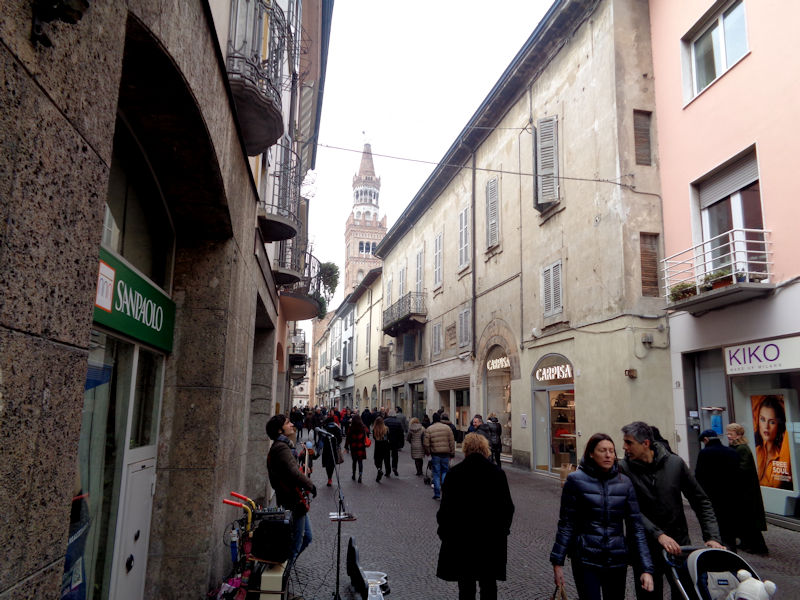
On the Via Giuseppe Mazzini, heading for the Duomo, of course. Though there may have been earlier settlements here, the existence of Crema is documented as part of the properties of the 11th century Boniface, Margrave of Tuscany, and in 1098 his daughter, the redoubtable Matilda the 'Grand Contessa', gifted it to the Bishop of Cremona. In the 12th century, the noble prisoners of war from Lombardy were returning from exile in Germany and forming the religious order called the Humiliati around Milan. They brought with them advanced German methods of wool processing, and the Cremaschi took those up as a specialty which stayed with them over succeeding centuries.
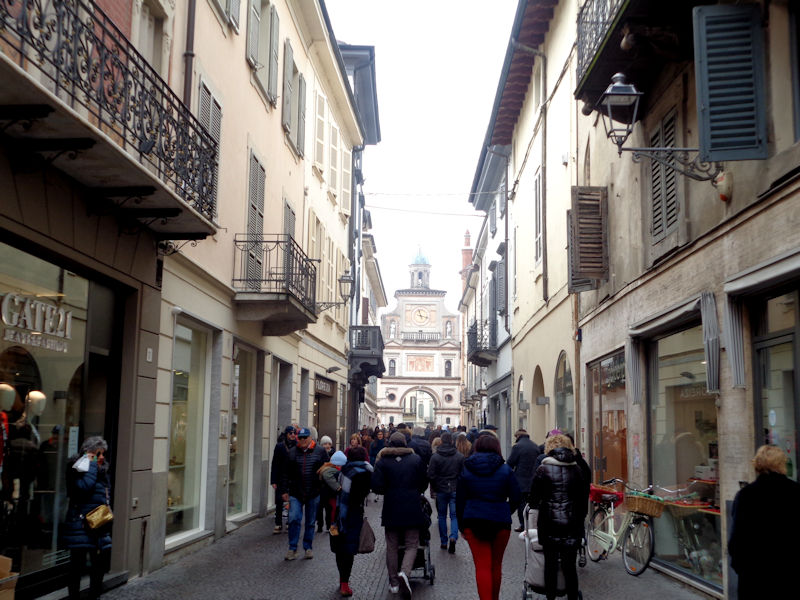
Approaching the Piazza del Duomo. In 1159, Crema joined up on Milan's side in resisting the imperial ambitions of Frederick I Barbarossa; Cremona at that time was the Emperor's main ally and was also involved in hostilities with Crema about what obligations Crema still owed to the Bishop of Cremona. The Cremonesi were able to persuade, and bribe, Barbarossa to besiege and finally destroy Crema in a six-month siege that ended in January 1160. The city was burnt to the ground, and in 1162 (the same year in which he destroyed Milan as well) the Emperor forbade any reconstruction of Crema; that edict was invalidated by the Peace of Constance in 1183, when the city was permitted to begin rebuilding and evolved into a free commune through the 13th century.

The Piazza del Duomo, along the south side of the Duomo. The commune period was a prosperous one for Crema, with many of the public buildings, including the Duomo, being built, as well as new city walls and defensive towers, but under pressure from all sides in 1335 the city surrendered to Azzone Visconti and came under Milanese control. In the chaos following the death of Giangaleazzo Visconti, the first Duke, in 1402, a local family, the Benzoni, briefly established a lordship in Crema, but that ended in 1423 and the city was once again subject to the Visconti.
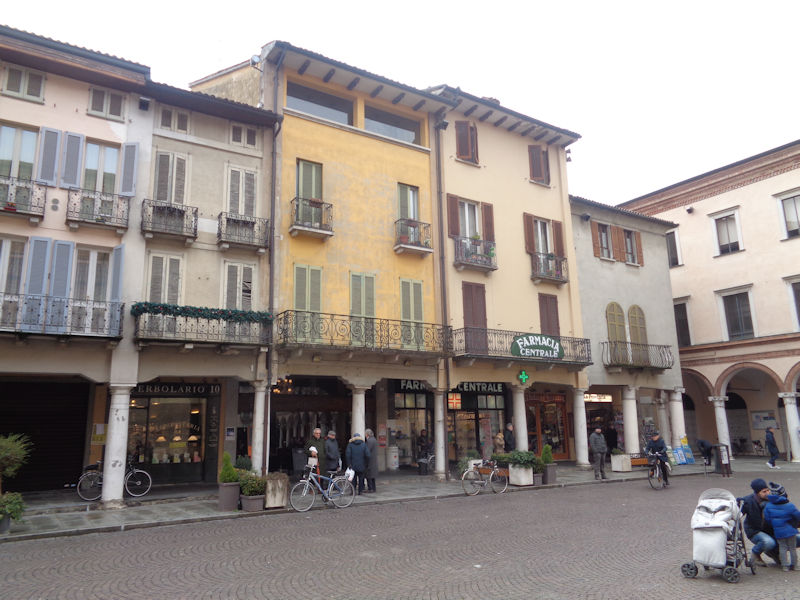
The arcaded southern side of the Piazza del Duomo. With the death of Filippo Maria Visconti in 1447, taking advantage of the anarchic situation with the Ambrosian Republic, the Venetians besieged Crema -- the subsequent Treaty of Lodi in 1454 recognized Francesco Sforza as the Duke of Milan and the frontier between Milanese and Venetian control was set at the river Addo; that meant that Bergamo, Brescia, and Crema were handed over to governors from Venice permanently, with only one short break until Napoleon came in 1797.

The Arco del Torrazzo, or Torrazzo gate, and clock tower leading out of the Piazza del Duomo westward down the Via XX Settembre, part of the 1525 reconstruction of the City Hall on either side of it. The statues beside the clock are of San Vittoriano and San Pantaleone, from the 15th and 17th centuries respectively.
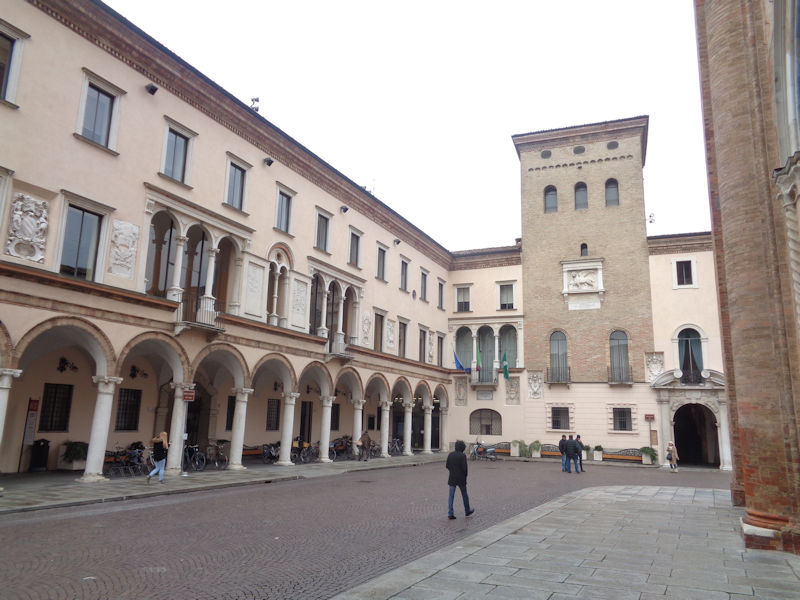
The piazza in front of the Duomo on the right and the city administration along the left side. The Piazza del Duomo took its present shape during a kind of building renaissance that took place under the Venetians, here where the medieval citadel had stood at the centre of the old city.

The Duomo di Crema, or Cattedrale di Santa Maria Assunta, was begun in 1185 to replace the early cathedral that was destroyed by Frederick Barbarossa in 1160. Progress lapsed in 1212 but resumed in 1284 and it was completed in 1340. In 1385 the apse was extended and a crypt was added. The belltower was built in the 14th century but the octagonal cap on it was extended upward in the 1600s (it looks like a stubbier version of the Torrazzo belltower in Cremona).
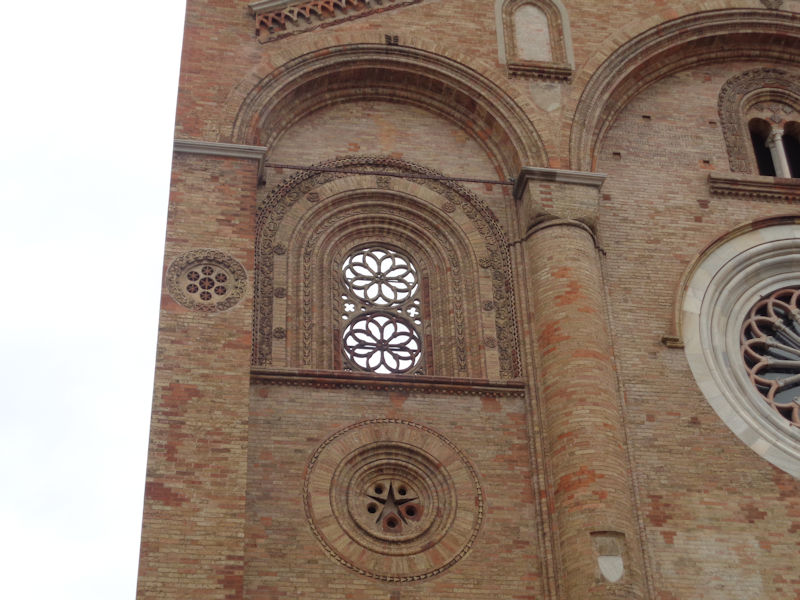
There are "open-sky" windows on both sides where the façade has false fronts on both sides of the higher roof of the nave.

The interesting façade is in a Lombard Gothic style. There is a single portal with a rose window above and mullioned windows on either side of the portal. There's a stylish loggia at the top of the façade.
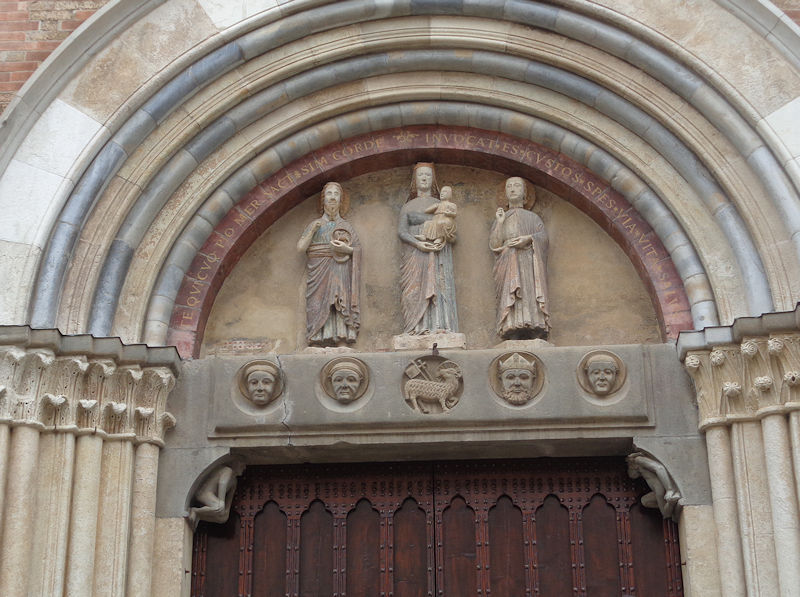
In the lunette over the door, which it's considered might have been brought forward from the earlier cathedral, we've got the Madonna and Child flanked by St Pantaleon and John the Baptist. Pantaleon is the patron saint of Crema; he was one of the 'Fourteen Holy Helpers', said to have been a victim of Diocletian's persecution in Asia Minor in 305. Known for his healing abilities, he was the patron saint of physicians, and his cult spread particularly in the plague years of the mid-1300s. In Italy he could also be looked to to give winning lottery numbers. We saw a vial of his sacred blood in the cathedral in Ravello a few years ago. The satirical commedia dell'arte character Pantalone, meant to satirize the typical Venetian citizen, from his characteristic dress gave us the word 'pantaloons' and thus 'pants'.
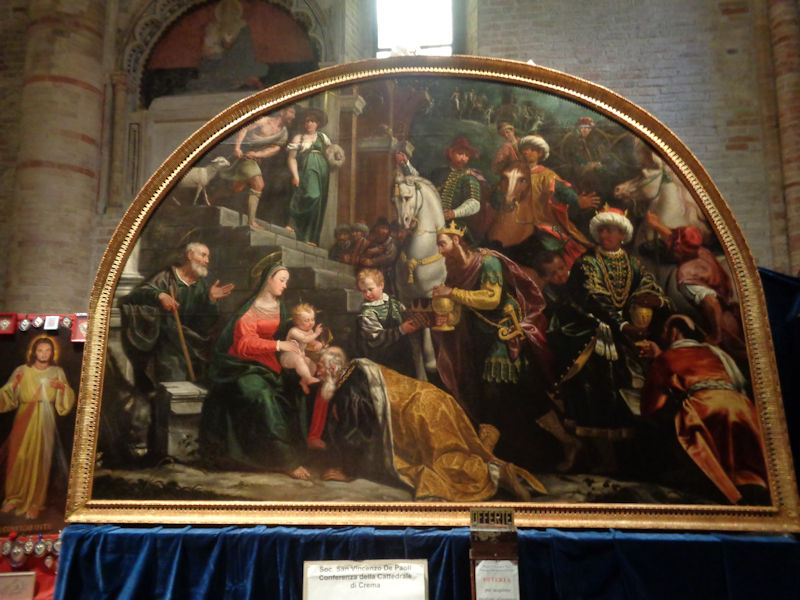
A crowded 'Adoration of the Magi', by Giovanni Paolo Cavagna from Bergamo, 1595, a recent restoration financed by the Lions Club of Crema.

The high nave and altar, with two aisles with lower ceilings and five bays among the pillars
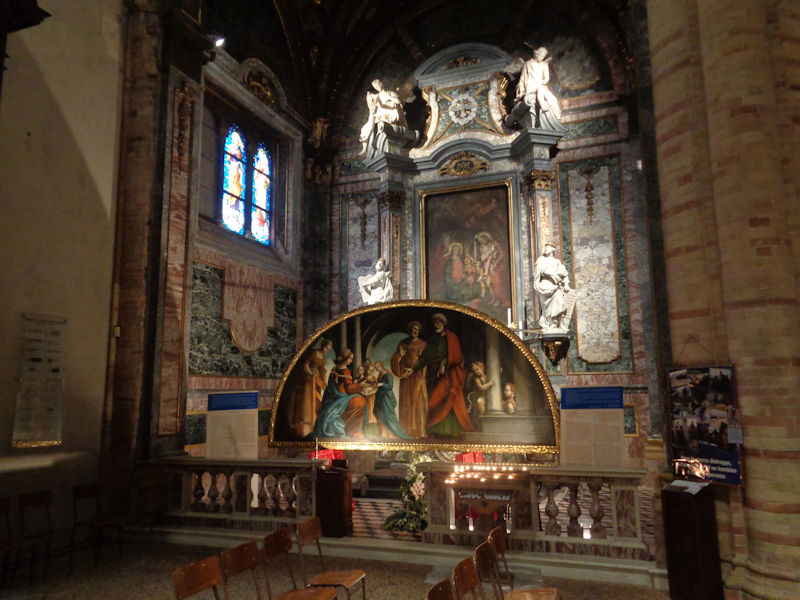
Another restoration in a side chapel

The altar in a raised choir
 |
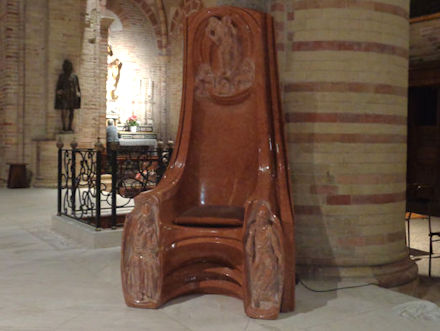 |
The altar and presumably the Bishop's chair

'Assumption of the Virgin' (the prospectus says that there is a Guido Reni picture somewhere in the building, but that's not his Assumption). The 'Miraculous Crucifix' was saved from the fire into which it was thrown by a Ghibelline soldier.

A chapel next to the apse
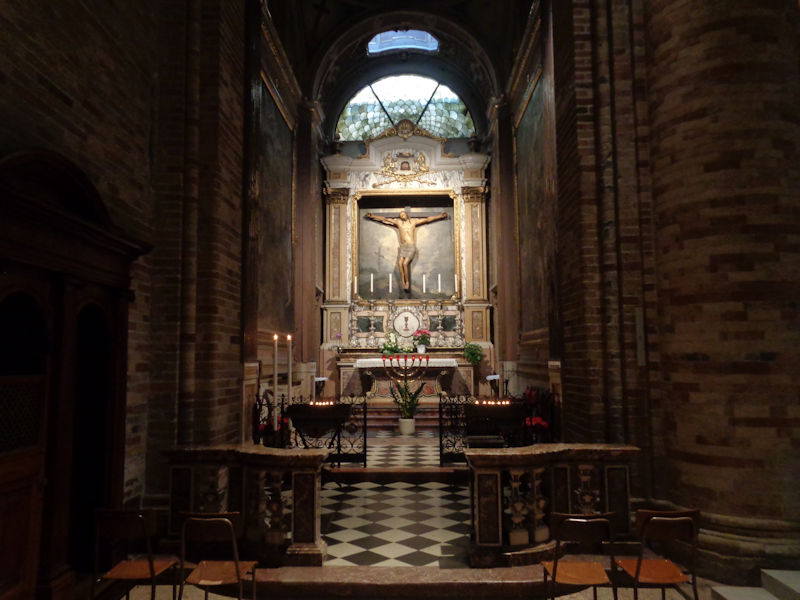
Another chapel

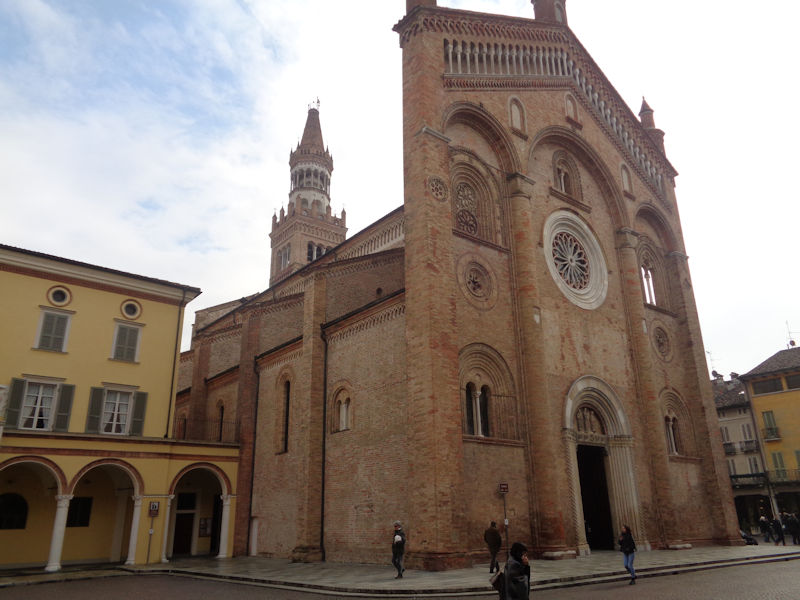
In the 16th century the Piazza del Duomo was extended over here on the northern side of the Cathedral.

That's the Palazzo Vescovile or Bishop's Palace; first built for the office of the College of Notaries as part of the urban renewal plan of 1549, but it was turned over to the church in 1580 when Pope Gregory XIII made Crema the seat of its own diocese.
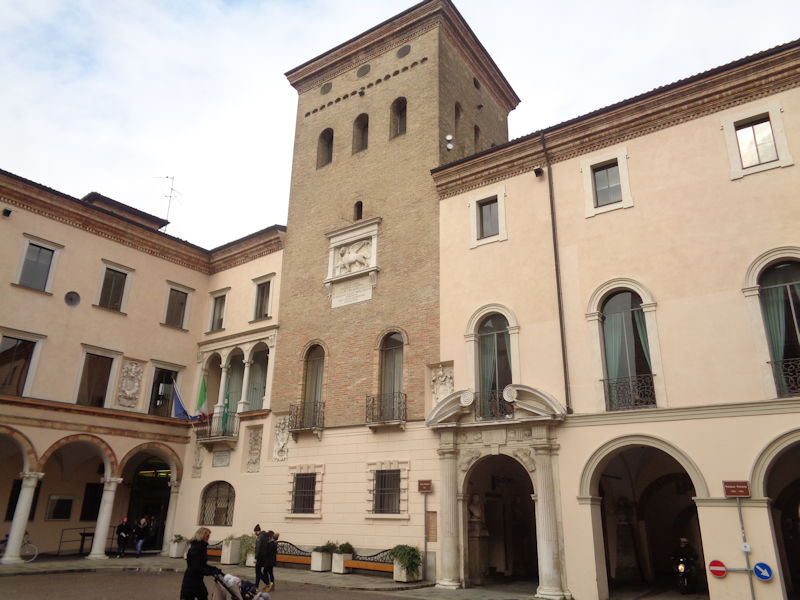
The Praetorian Palace and its 14th century tower, featuring a bas-relief of the Venetian Lion of St Mark.

Inside the Palazzo Pretorio
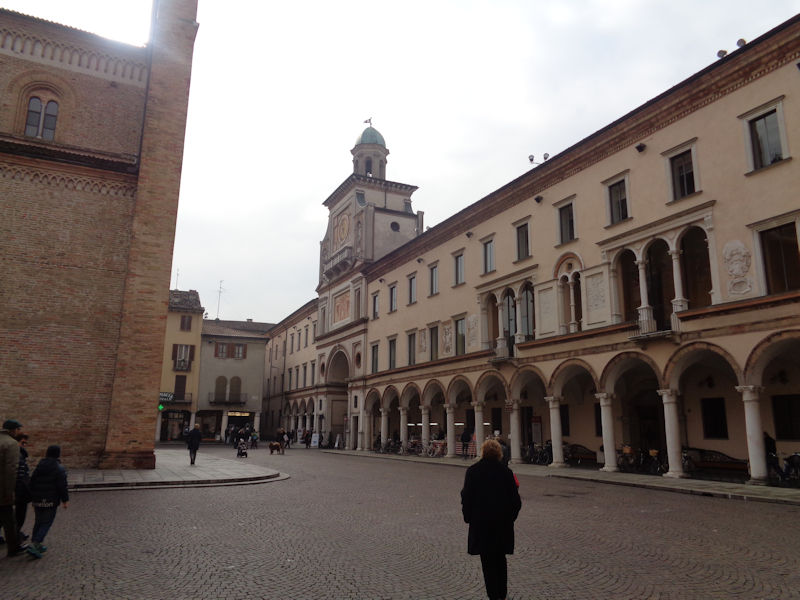
Along the right side of the square are the offices of the City Hall, a fine Renaissance building begun in 1525; the Torrazzo clock tower leading out of the central square was part of the same building project. The marble plaques above the arcades represent the coats of arms of the city's podestà or chief governors.

Leaving the Piazza del Duomo
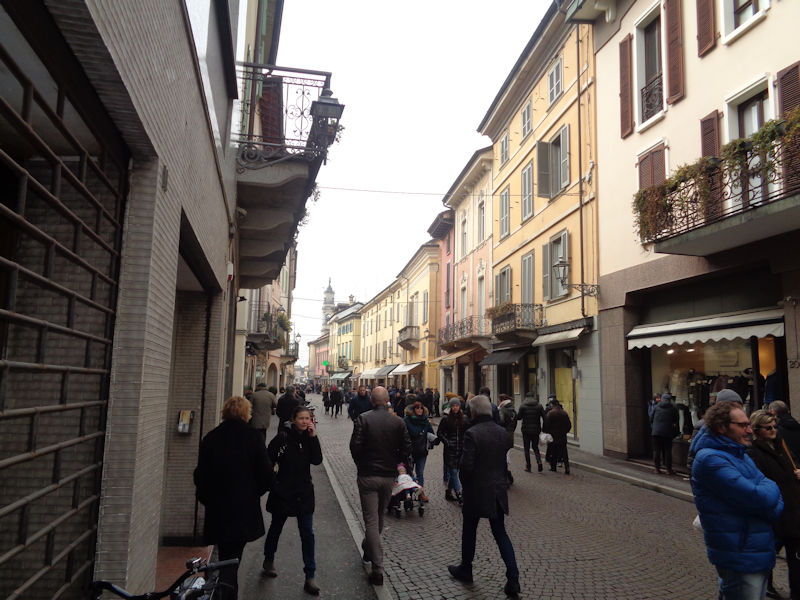
Via XX Settembre
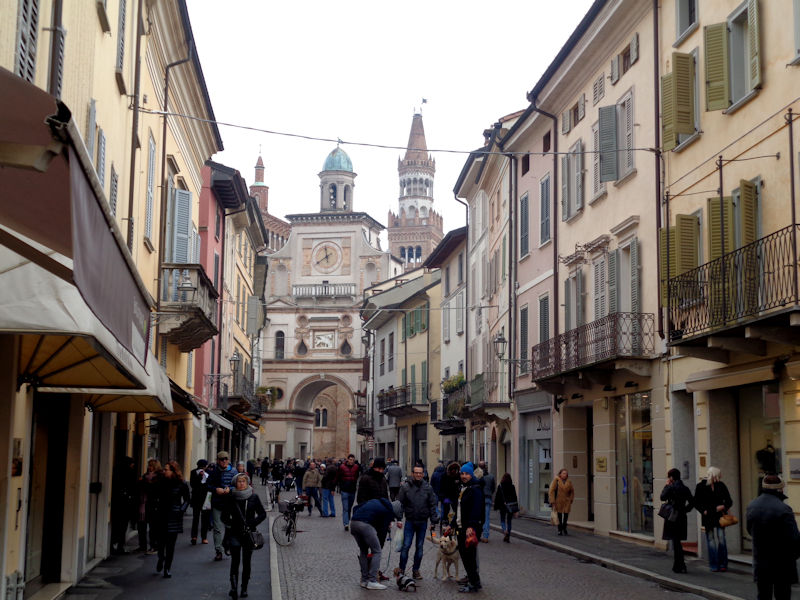
Looking back at the Torrazzo gate, with its own Lion of St Mark on this side, and the Cathedral behind it

Zoomed
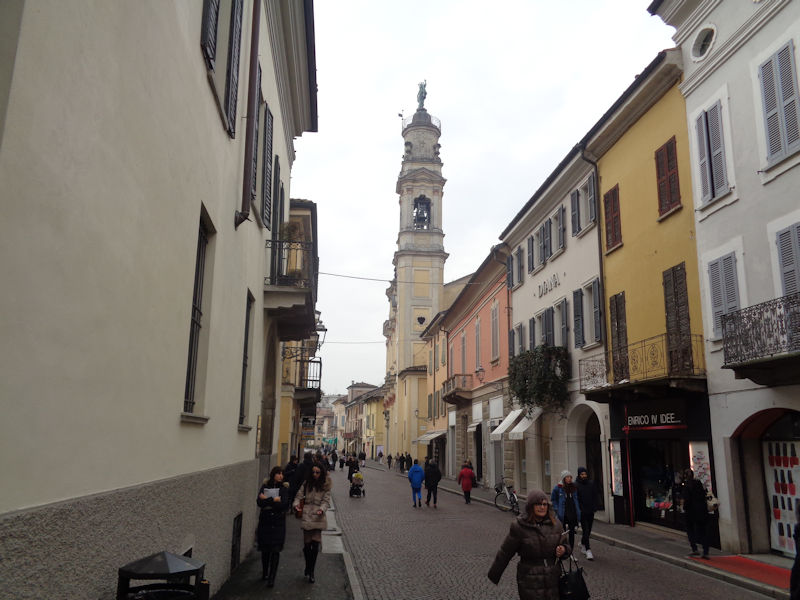
Another church tower coming up

Yikes!

At the end of XX September Street, we're outside the old walled city and facing the Porta Ombriano, originally one of the four fortified gates into the city, constructed in 1488, this one leading out on the road towards Lodi. When the city fortifications were removed beginning in 1803, this was redesigned as a neoclassical monument and left to stand alone when the customs tollhouse was shut down in 1919.

Back up the street, we're having a short wait whilst a nice lady in the shop next door whips us up an excellent lunch. So we'll have a quick look into the ornate yellow church with one statue and lots of empty niches.

Eighteenth century churches are not usually our sort of thing, but lunch isn't ready yet, and the Holy Trinity Church, built, overbuilt some might say, in 1737-40, clearly suited the tastes of the aristocrats and upper bourgeoisie of this neighborhood.

The church has been described, in church literature (and in Google translation), as 'an invitation to Christian joy in the irrepressible vitality of its architecture'. The organ dates from 1909.
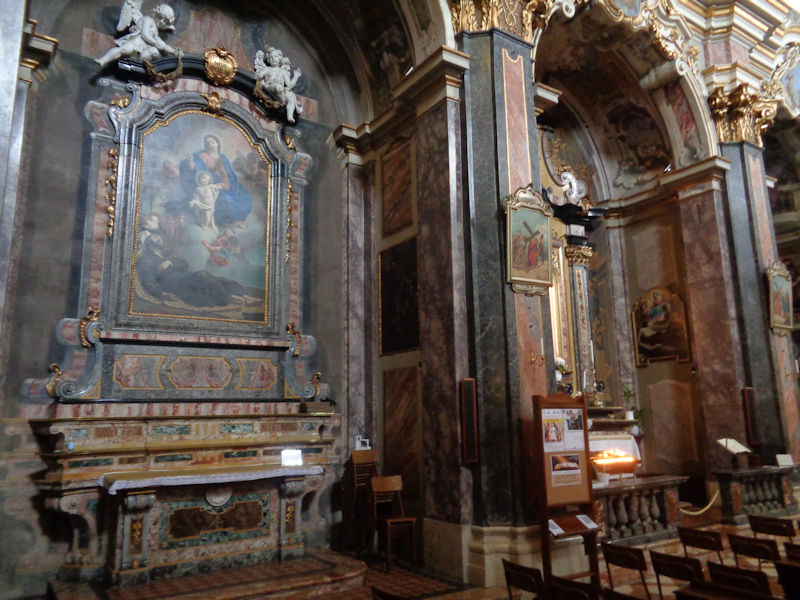
It's a bit overwhelming.

This is the Chapel of St Francesco di Paolo, who died in France in 1507, but the guy in the glass box is "the little martyr San Teodore coming from the catacombs of Sant'Agnese'.

A trompe-l'oeil dome
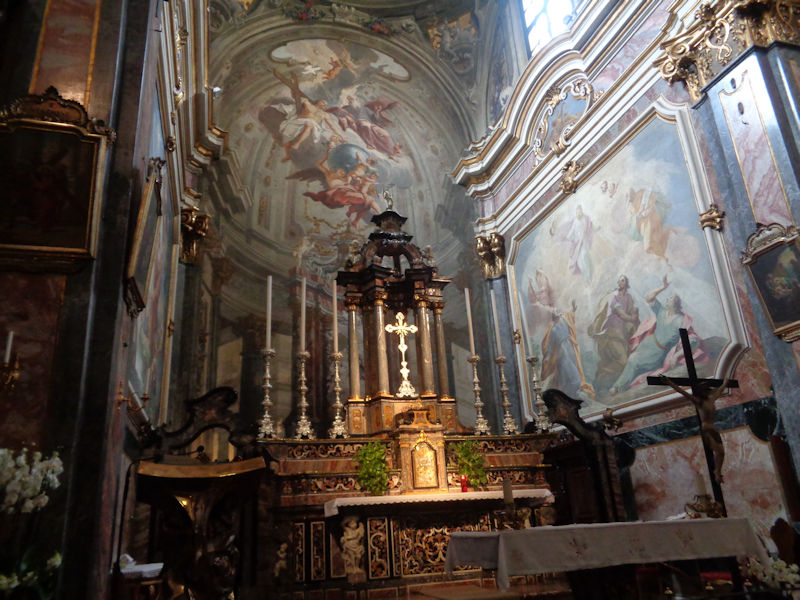
Let's go get lunch.
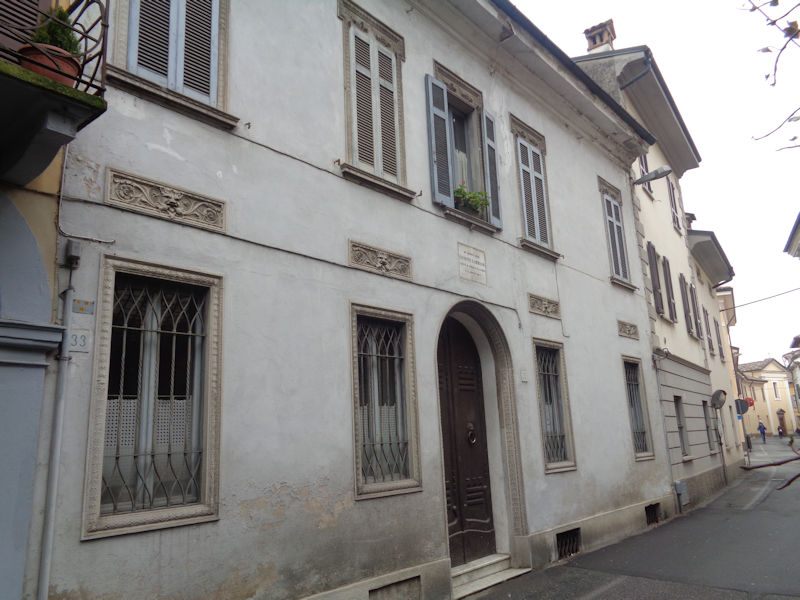
'Washington slept here', or rather Garibaldi did, or rather in this house Garibaldi came to visit the Mayor, Mr Cabini, on 11 April 1862
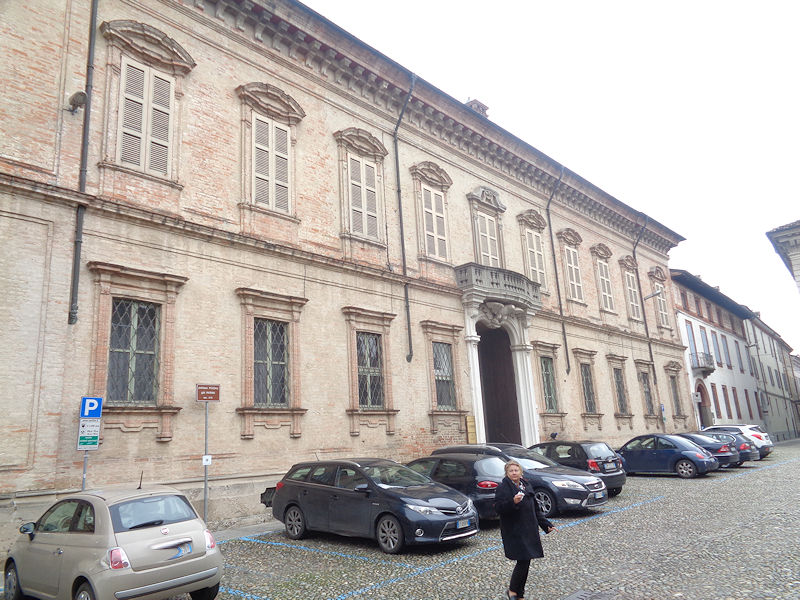
The Palazzo Patrini, built 1702-1712 by a leading family of the time, also called the Palazzo Pozzali for the present owners since 1974.

The Ex-Church of Santo Spirito and Santa Maddalena was built 1511 to 1521, as part of a hospital complex, but suppressed in 1810 and used as a school, and then a theatre, and then in the 1920s as a cinema. And then a coal warehouse, and then for fruits and vegetables. It was revised by the city as an auditorium in 1980, but finally in 2000 everybody cut it loose.

The Mercato Austroungarico in the Piazza Trento e Trieste, built in 1842
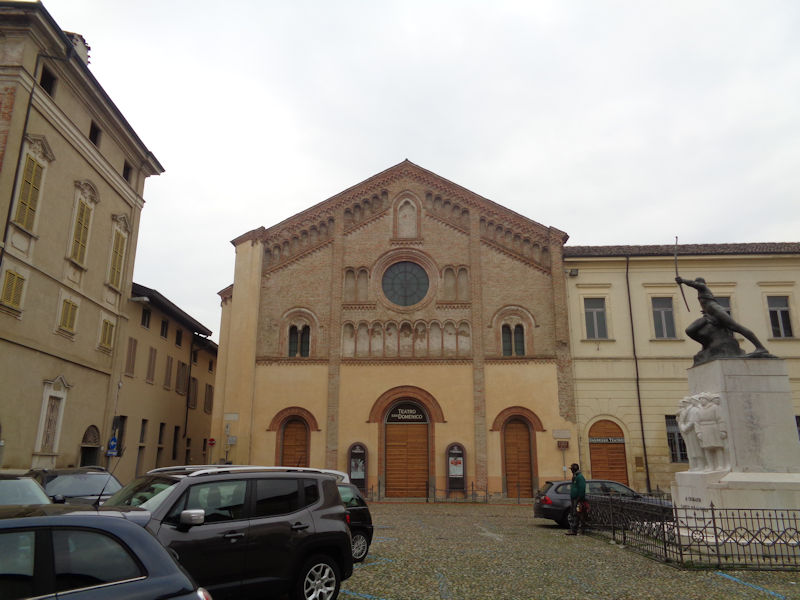
The Teatro San Domenico -- the buildings were built for the Dominicans in 1463-1471, and when the Inquisition was established in 1614, unwelcome books could be burnt in the square here. The convent was suppressed in 1798 and turned into barracks for the French army; it became a cholera clinic in 1836, then a school, and was turned over to the city administration in 1899. After years of innovative uses as offices, a covered market, a military hospital, and a cinema, and finally a gym for city schools, serious restorations were begun in 1970, and it was opened as the municipal theatre in 1999.

Oh, gag me.
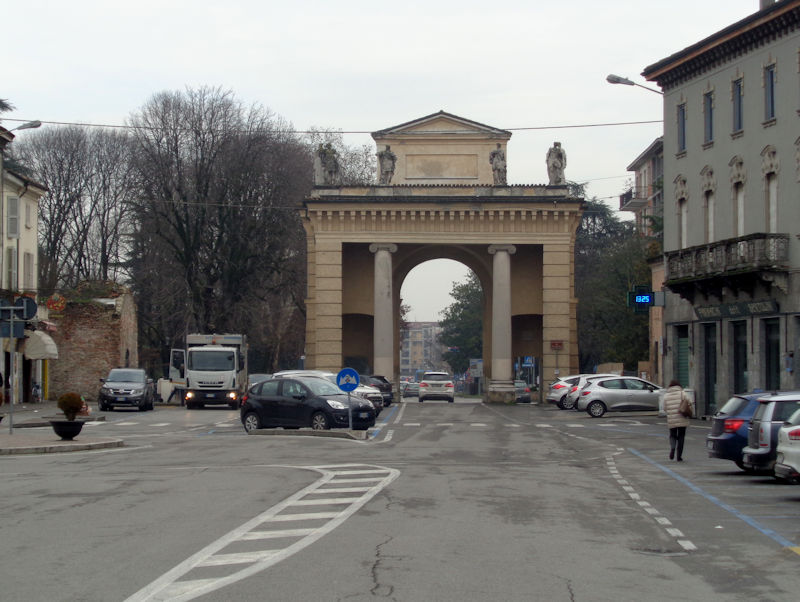
The Porta Serio, a monumental version of the original gate through the city walls facing the river Serio to the east

Every Italian city needs its own Garibaldi statue. In the Piazza Garibaldi.
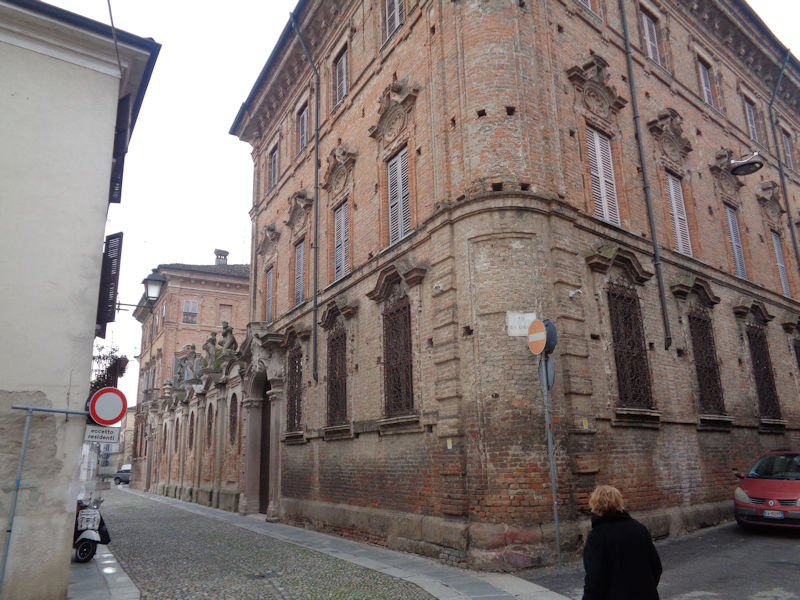
The Via Dante Alighieri -- we're looking for the Civic Museum, and this looks promising

Facing the Civic Museum, this is the Palazzo Bondenti Terni (also called the Palazzo Terni Bondenti), a baroque palace begun in 1698 for the newly ennobled Bondenti family and more or less completed in 1737. The structure is interesting; there are two large wings and a connecting block that's set back from this front wall to make a courtyard.

The entrance in the left wing. The palace appears to have been the residence of the prolific British/Italian historical author the Countess Winifred Terni de Gregory (1879-1961), and may still be in the family.

The Bondenti Terni courtyard. The King Vittorio Emanuele II visited here in 1859.

Just across the street, this is the Museo Civico di Crema e del Cremasco, the Civic Museum of Crema and the region, founded in 1960 in the former 15th century Augustinian monastery.

Actually, we're a little early for the afternoon opening, but there is a very nice little café.

The museum is very attractively laid out, with sections on archaeology of the region, artifacts of its history, and many local artists for all periods, with a few works by others, like Bronzino.

An early view of the city and its moat, undated but apparently from the 16th century

A later view, dated 1704, with a new moat around enlarged city walls and more modern star-shaped fortifications and ravelins. The old moat is serving as a system of canals with the city. We're presently standing where the orange dot is.
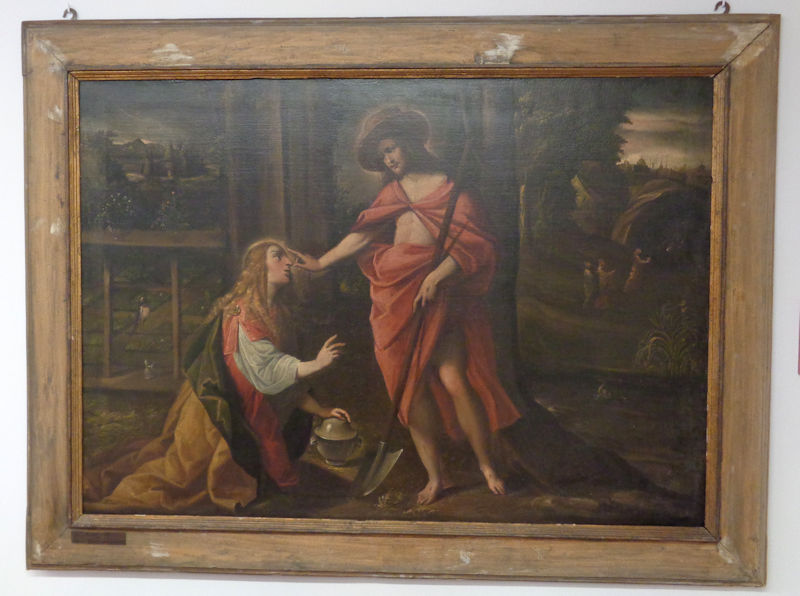
'Noli me tangere', and don't touch my hat either. By Il Conciabracci (Tommaso Pombioli) of Crema, ca. 1636
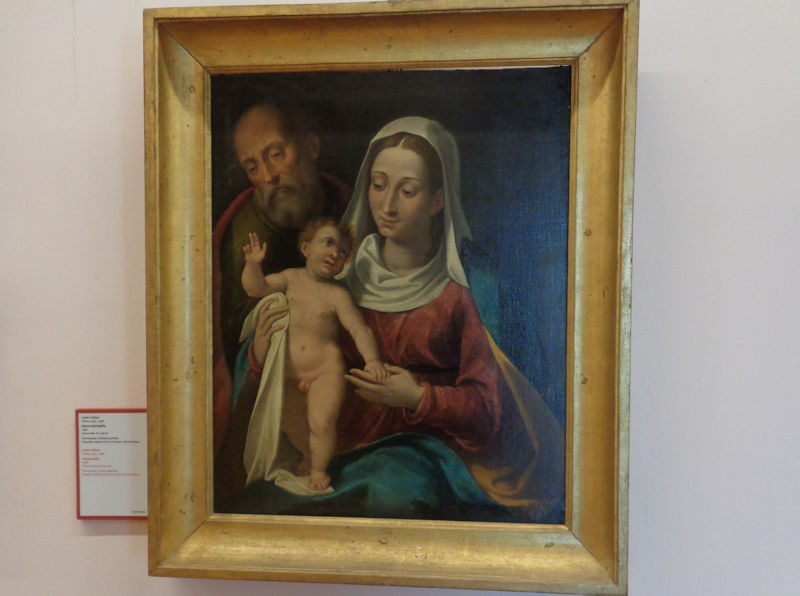
A nice Holy Family, by Carlo Urbino, also from Crema, 1582
 |
 |
Saints Lucia (with the eyes) and Catherine of Alexandria (with her torture wheel), who appear in fact to have been twin sisters. Both are by Giovan Battista Lucini, also of Crema, ca. 1670. Lucy was normally shown holding her eyes, symbols of her tortures and martyrdom, either like this or in a cup or on a plate, but also with an apparently functional pair of eyes in her head as well.

Mary Magdalene, more contemplative and less penitential than often seen, by Stefano Maria Legnani (Il Legnanino ), ca. 1705.

To a certain kind of cultural disposition, this series of works is definitely the high point of the visit. Painted by an unknown 'Pittore lombardo' between 1750 and 1780, they came from the Church of San Bernardino in the city and are owned by the Crema Cathedral. This one shows what are assumed to be an emperor and a king.

Here we have a bishop and a priest
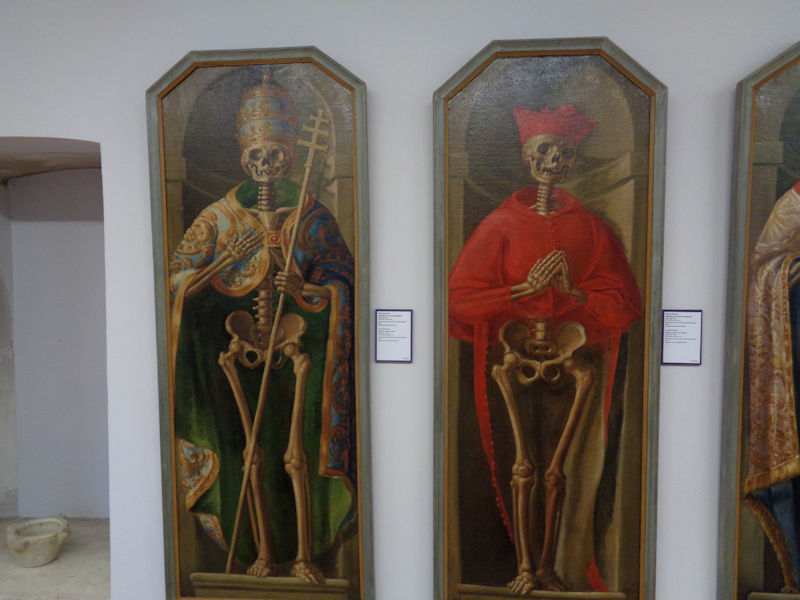
A pope and a cardinal

The one on the left is speculated to be a doge, and on the right, possibly a magistrate

A noblewoman with a kid, and a knight (an 18th century style knight). There are also an artisan, a doctor, a merchant, and a poor man, but we don't want to overdo it.

A place like this has got to have a cloister around here somewhere.
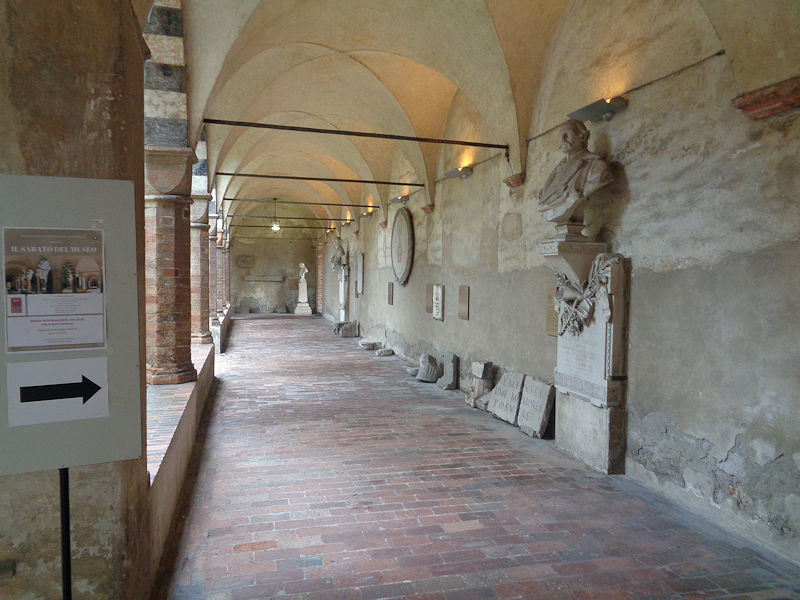

In the cloister of the Augustinian monastery
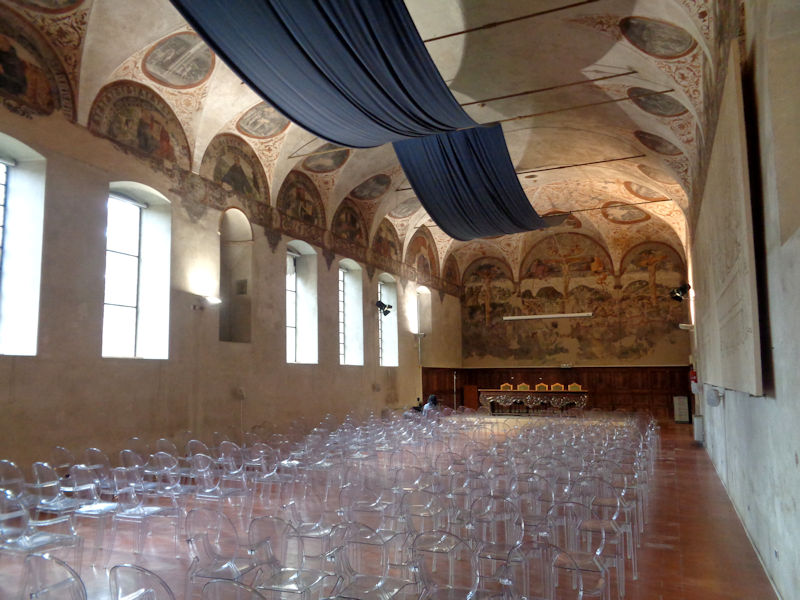
Upstairs in the museum, an elegantly frescoed great hall
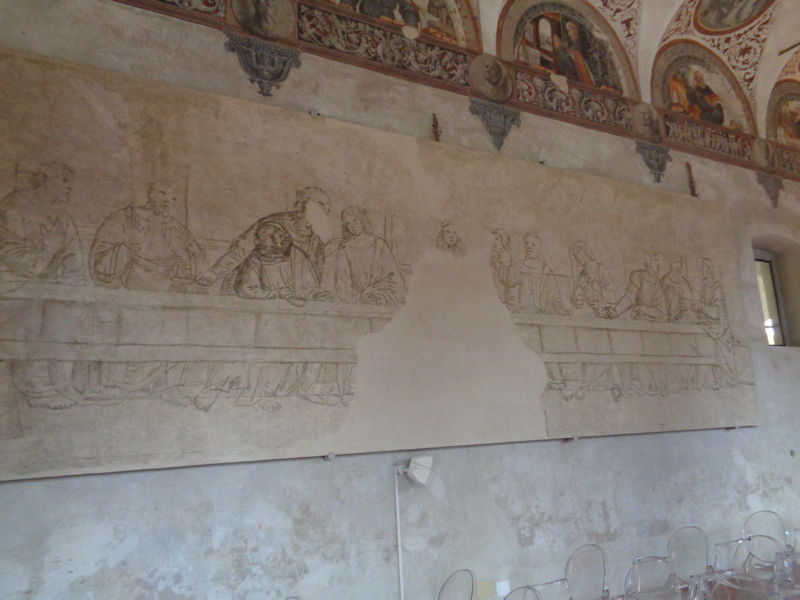
The sinopia or underlying sketch of what appears to be a damaged Last Supper

And indeed, there it is.
Next: Some more sightseeing in Lodi.

 Feedback
and suggestions are welcome if positive, resented if negative, Feedback
and suggestions are welcome if positive, resented if negative,  .
All rights reserved, all wrongs avenged. Posted 29 March 2018. .
All rights reserved, all wrongs avenged. Posted 29 March 2018.
|
 Dwight Peck's personal website
Dwight Peck's personal website








































































